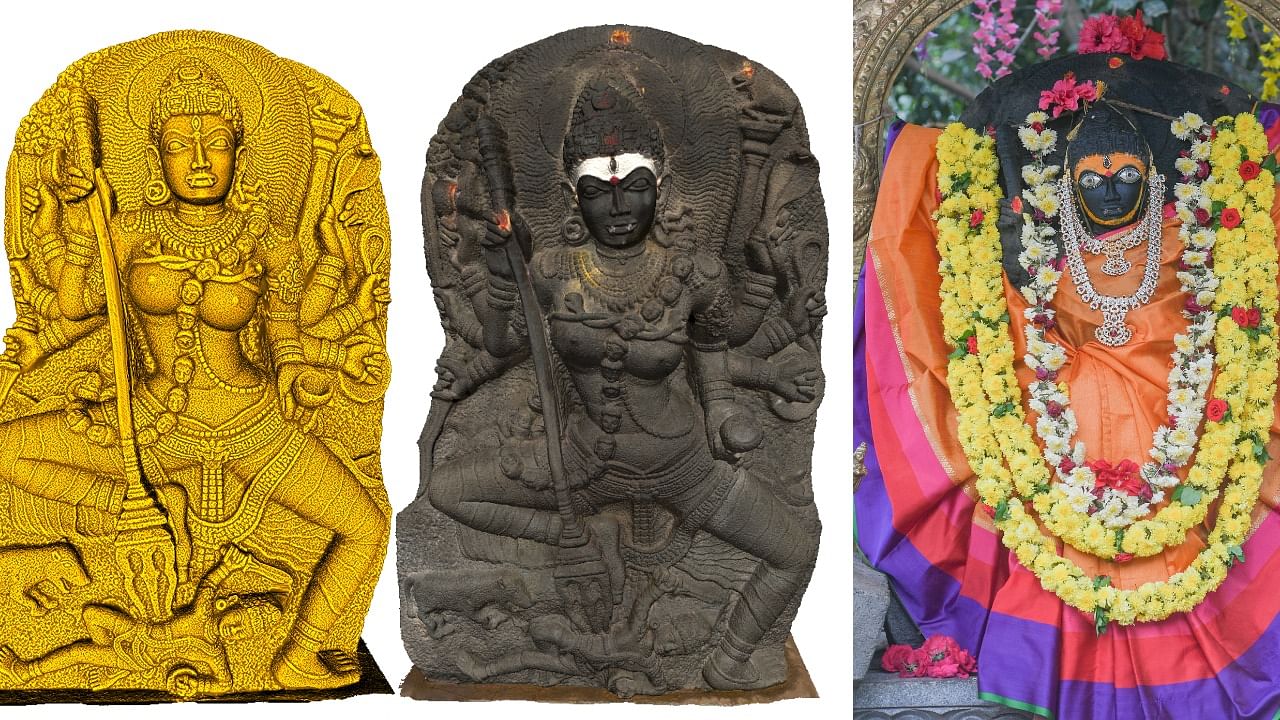
A conservation project on stone inscriptions of Bengaluru has used 3D scanning technology to digitise a 10th-century Chamundi idol in the village of Marasuru.
The village, located in Anekal taluk, was mapped as part of the Bengaluru Inscriptions 3D Digital Conservation Project, led by Mythic Society. Members of the project team have been digitally scanning inscriptions in and around the city since January 2021. Udayakumar P L, project director (honorary), said the team made an exception to include the idol – which is in “excellent shape” – in the project’s scope.
“The presence of such an exquisitely detailed idol, at a location like this, is rare,” Udayakumar told DH. Marasuru is located about five kilometres from Chandapura, off the bustling Hosur Road. The deity, housed in a wooded enclosure, is worshipped by residents of Marasuru and seven other villages, as ‘vana durga’.
Back from the deep
Before the veneration, there was desertion. Villagers said the deity was worshipped as Bandi Mankalamma till the 1970s. A series of “ominous” occurrences, including ailments suffered by the temple priests, is believed to have led to the abandonment of the idol.
Four decades later, a group of villagers who had grown up worshiping the deity, found the idol buried 15 feet deep in a lake. “The deity was reinstalled as vana durga Mahakaali in 2018,” Srinivas Reddy, a Marasuru resident, said.
The eight-armed idol in a slaying posture has been described in the history journal Itihasa Darshana as a work from the Ganga period, also inspired by Nolamba styles.
Morning and evening pujas are performed at the temple every day. Reddy said the temple was being maintained entirely by the villagers.
The Mythic Society project scopes about 8,000 sq km across the districts of Bengaluru Urban, Bengaluru Rural and Ramanagara. A field survey revealed that 30% to 40% of the about 1,500 inscriptions already documented in the project area were lost. By using digital scanning technology to create the 3D models, the project facilitates detailed studies on the inscriptions and manufacturing of physical replicas.
At Marasuru, the project team documented, for the first time, two hero stones from the 9th and 10th centuries, that celebrate heroes who had died in battle. The village is also home to a 10th Century Someshwara Temple. The Mythic Society project estimates Marasuru as about 1,200 years old.